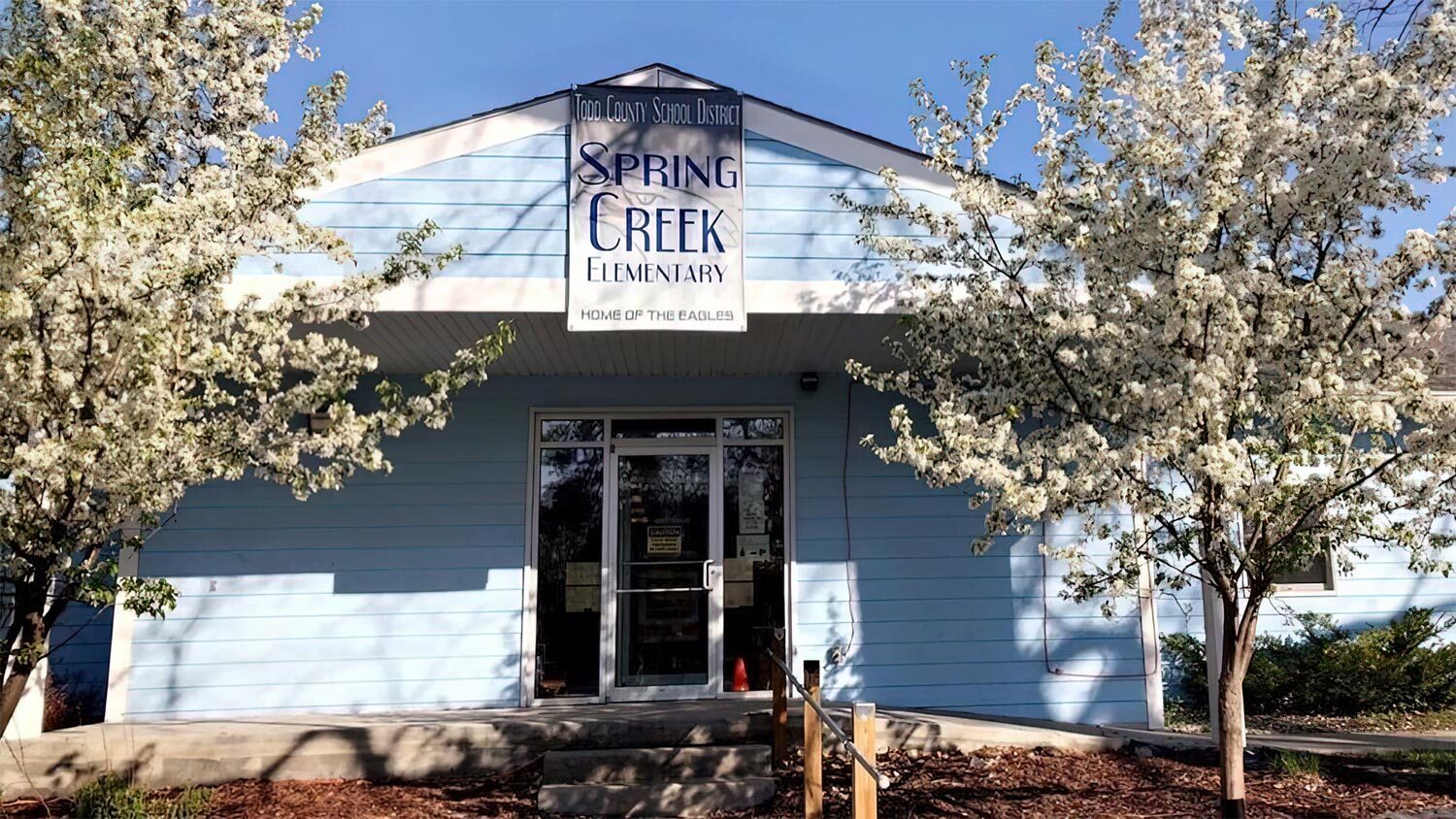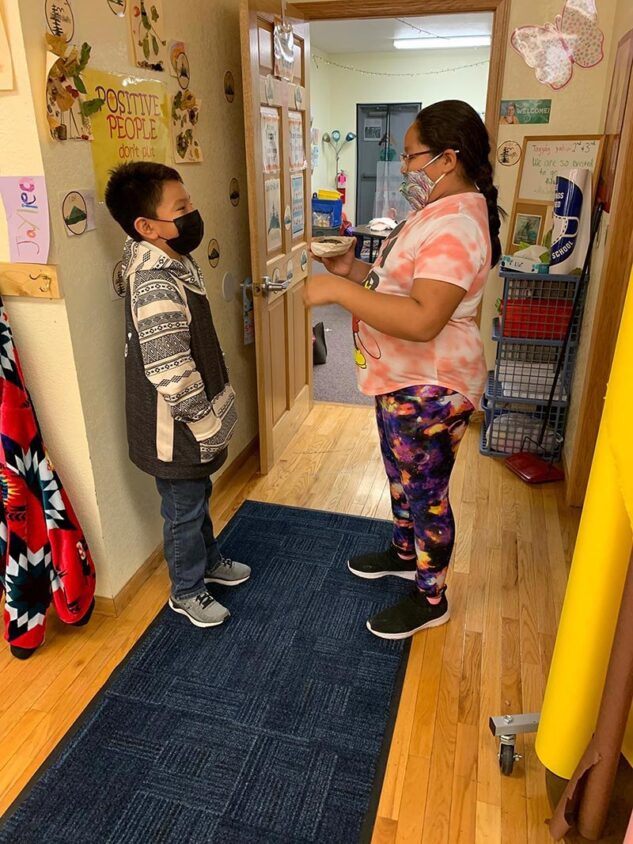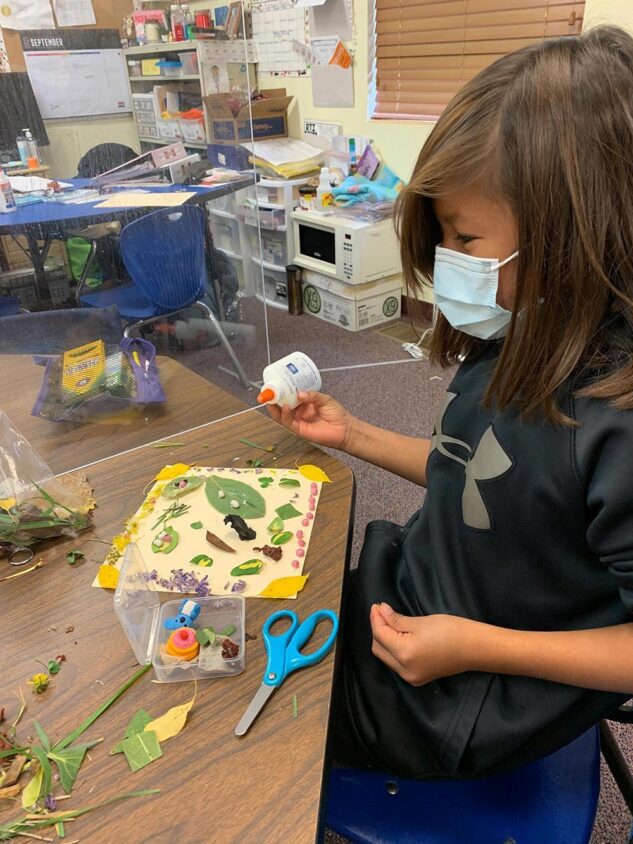Nurturing Sacred Beings at Spring Creek Elementary School

Nestled in Todd County, South Dakota, is the Spring Creek Elementary School. The school is surrounded by a river and you must drive to the canyons through rounds and rounds until you finally happen upon it. The school, which has joined Transcend’s Rural Schools Design Community, is composed majoritively of Indigenous people who are part of the Sicangu Lakota Oyate. Listening to community voices is a critical component to this collaboration.
Roberta Bizardie is the principal, not only of Spring Creek Elementary but also of Lakeview and He Dog Elementary in the district. She’s been a school leader here for 25 years and grew up in the small community of St. Francis, up the road from Spring Creek. Ms. Bizardie worked hard to build trust among teachers, paraprofessional staff, and parents at Spring Creek: a group that works together to support educators new to the area. “Our staff community is vibrant and diverse,” shares Ms. Bizardie. “We all wear multiple hats. One day you are teaching multiple grades, and the next day you might be driving the school bus. The majority of our certified teaching staff are not from the reservation while most of our support staff (including teaching assistants, custodians, etc.) are local to this community. The result is a wonderful balance where we have teachers coming from different states but supported by our staff, many of whom are Lakota speakers, and can help bring them into this community.”

The school curriculum draws from Oceti Sakowin – Essential Understandings and Standards adopted (but not mandated) by the State Board of Education in 2018. These essential understandings include topics on Lands and Environment, Identity and Resiliency, Culture and Language, Kinship and Harmony, Oral Traditions and Story, Sovereignty and Treaties and Way of Life and Development. “We are getting closer to indigenizing what we are doing, but there’s a long way to go,” shares Ms. Bizardie.
As part of this effort towards indigenization, the school prioritizes a whole-child model, which is rooted in the belief that a student’s academic success is linked to their overall well-being.
Increasingly, Spring Creek is moving from trauma-informed learning to healing-informed learning, says Ms. Bizardie. “We know that our kiddos are impacted by generational trauma,” she states. “We’ve done a lot of training over the past three years so teachers can understand the impact of generational trauma. We are now at the point where we understand the effects of trauma and want to identify some healing informed strategies to help our kids navigate a world where trauma does impact us.”
How does this play out during the school day? One example is offering students Social Emotional Time when they arrive in the morning.
This year, school starts at 8:30 a.m. but we take the first thirty minutes for Social Emotional Time. It’s for kids to be here and teachers to check in with their students to help them transition to learning.
Ms. Roberta Bizardie
Teachers at Spring Creek are pleased with the whole child learning and recognize the value of this community-driven approach. “When I think about Spring Creek and the unique way we are moving to indigenize school for our students, the collective of our whole staff comes to mind,” shares Kindergarten and First grade teacher Lillian Edwards. “Teachers, paras, and support staff know these students so well, we know their families and their siblings, and often know what our students are going through outside of school. It’s now about making the content and way of learning in the classroom more in line with this communal way of being and caring for each other.”

One way this can be accomplished is by integrating parents and elders in the community more and more into learning. “They have great value for our students’ heritage and will continue to guide this school,” states Ms. Bizardie. “Our community is one of the most traditional ones on the reservation. Indeed, of the twenty-two communities on the Rosebud Reservation, Spring Creek is known to have many traditional Lakota language speakers.
In Lakota, the word for children – wakanyeja – translates to “sacred being.” When parents and elders are asked about their hopes for their precious and sacred children, there is hope and there is fear. “I worry,” one parent said, “I want the kids to find their way in the world but not lose sight of who they are.” Another mother wonders about how the world will treat her daughter. ”Being a Native American child going out there. Can they fit in the same way? Do they have that opportunity to fit in the same way? When the topic of college comes up, I try not to panic about it. But at times, I wish she would just choose the local tribal option (SGU).”
In an effort to bolster their children before they leave the community and face life outside the reservation, the Spring Creek community voices a desire to ensure students feel nurtured by adults beyond those in their nuclear family. “Here, aunts and uncles, and other adults are parents too,” shares Ms. Bizardie. A parent offers, “It’s not just my kids. It’s everyone else’s kids too. We always try to help each other. We all try to help the kids the best we can.”
Elders are seen as pivotal in supporting students and increasing their understanding of their heritage. “One of my goals for our children is to increase the use of our Lakota language,” shares a parent. “We can do this by bringing elders in: bringing a woman Lakota speaker in to talk to our ladies. Bringing an elder man to talk to our young boys.” Many parents voiced a desire for the school to lean on the elders in the community to foster intergenerational support. As one parent said, “Sometimes we just need a grandma to come in here and sit with us, and have her tell us the story of making bread. Because some of us don’t have that at home.”
As the school works to center on the experiences of learners, educators and school leaders are spending time deeply listening to students of Spring Creek and those who have continued on to junior high. Students, too, are indicating a deep desire for school to prepare them for adulthood. As one student shared:
I feel that school should teach us more of what we need to know later on in life such as filing taxes, voting, cooking, driving – because I feel we need to know more than the basics of math, reading, science, social studies, and writing skills. I would like us to have more field trips because they help us learn, and ones to meaningful places that require overnight travel because we are so far away from things here. We have a really great school and the staff there are so helpful when you need it, this would just make it better.
Spring Creek Elementary Student
The principles and values that have guided the citizens of the Spring Creek community continue to play a pivotal role in the aspirations adults hold for the next generation. An important aspect of the community-driven redesign taking place at the school involves listening deeply to parents, elders, and students as the school works to shape the vision that will take their children – their sacred beings – through tomorrow.
Transcend supports communities to create and spread extraordinary, equitable learning environments.

